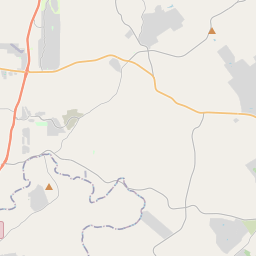Anhalt Halle and the Germania Farmer Verein
Historical marker location:






Anhalt began in the 1850s as a small, predominantly German, farming and ranching settlement. Originally known as Krause settlement, its name changed to Anhalt, meaning “stopping place,” with the opening of the Anhalt Post Office in the Krause store. The Germania Farmer Verein (Club) was organized in 1875 in Anhalt in response to cattle rustling and to provide benefits for members’ widows and children. The club brand, a “G” on an animal’s left shoulder, was placed with a member’s own brand to prevent rustling. The brand was registered in Comal, Kendall, Bexar, Blanco and Gillespie Counties. With the eventual elimination of the threat of rustling, the Verein could spend time on improving livestock and crops as well as planning social festivals.
Anhalt Halle was built in 1879 as the Verein meeting place and a social gathering place. Annual festivals were held such as the Maifest (following spring planting) and Oktoberfest (following fall harvest). The dance hall, one of the oldest and largest in Texas, has increased in size with additions built in stages. Over the years, many notable local and national performers have played here. What began as a stopping place in the mid-1800s remains a popular attraction for many. Visitors to anhalt can experience the culture that was prevalent in the German Texas Hill Country. The Germania Farmer Verein has preserved many of the characteristics of the rich German heritage that has been passed from one generation to the next, from German language, music, and food to Gemütlichkeit (good times and good feelings)
As one of the most visible programs of the Texas Historical Commission (THC), historical markers commemorate diverse topics in Texas history, including: the history and architecture of houses, commercial and public buildings, religious congregations, and military sites; events that changed the course of local and state history; and individuals who have made lasting contributions to the state, community organizations, and businesses.
Texas is also home to the world's largest honky-tonk, Billy Bob's Texas in Fort Worth. The venue covers three acres and can hold up to 6,000 people.
In the early 19th century, German immigrants began to arrive, attracted by the fertile land and opportunities for a better life. These settlers established small farming communities and brought with them their language, traditions, and expertise in agriculture and craftsmanship. The town of New Braunfels was founded in 1845 by Prince Carl of Solms-Braunfels, becoming the first German colony in Texas.
The mid-19th century saw significant growth and development in Comal County, with the construction of schools, churches, and businesses. The area became known for its thriving agricultural industry, with farmers cultivating crops such as cotton and corn. The arrival of the railroad in the late 19th century further spurred economic growth and provided easier access to markets.
Throughout the 20th century, Comal County continued to evolve and adapt to changing times. The county's strong German heritage remained at the forefront, celebrated through events like Wurstfest, a German sausage festival. The tourism industry also grew, with visitors flocking to the county's natural attractions, such as the iconic Guadalupe River and historic Gruene Hall, Texas' oldest continually operating dance hall.
Today, Comal County is a vibrant and thriving community, blending its rich history with modern amenities and a strong sense of pride in its cultural heritage. With its beautiful landscapes, strong economy, and warm Southern hospitality, Comal County continues to be a desirable place to live and visit.
Comal County Timeline
This timeline provides a condensed summary of the historical journey of Comal County, Texas.
- 1846 - Comal County established as one of the original 23 counties in the state of Texas
- 1847 - Settlement begins in the area with the founding of New Braunfels
- 1850 - Comal County's population reaches 2,013
- 1861-1865 - County residents actively involved in the American Civil War
- 1870 - Completion of the first railroad through Comal County
- 1885 - Jacob's Well, a natural artesian spring, becomes a popular tourist attraction
- 1920s - Economic growth in Comal County, driven by agriculture and manufacturing industries
- 1941-1945 - County residents contribute to the war effort during World War II
- 1968 - Canyon Lake, a reservoir on the Guadalupe River, is completed
- 1990s - Rapid population growth and urban development in Comal County
- 2007 - Construction begins on the controversial Trans-Texas Corridor project